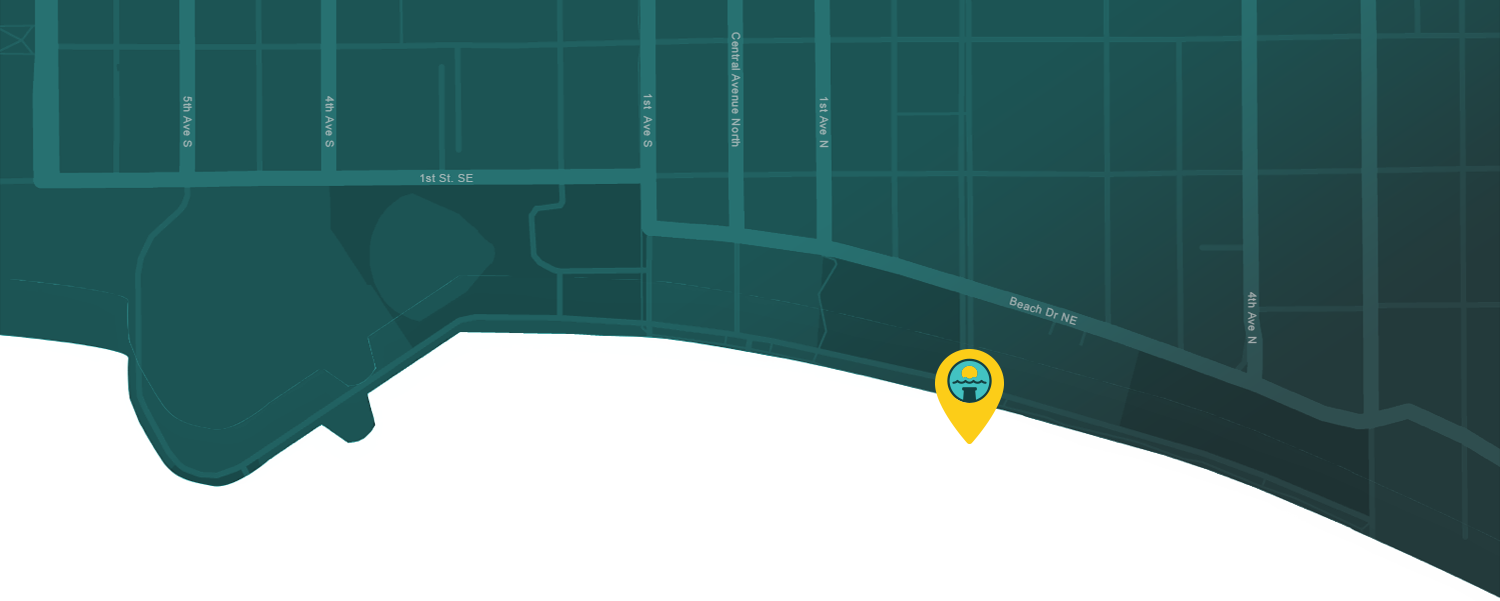
Tourists feed pelicans in front of the Million Dollar Pier.
The ink was barely dry on the armistice that ended World War I when St. Petersburg geared up for the 1918/19 winter season. Not wanting to take any chances, the city enlisted a charmingly aggressive young newspaperman, John Lodwick, as the first municipal public relations director ever employed in the United States. Lodwick went gangbusters at his new job, and the smiling faces of St. Petersburg visitors could soon be seen beaming from newspapers and magazines across the country, beckoning others to the Sunshine City. And people weren’t just visiting – they wanted to stay. During the decade of the 1920s, St. Petersburg’s population increased from 14,000 to 40,000.
As if God wanted to aid the St. Petersburg boom, a devastating Gulf hurricane pummeled the waterfront in 1921, virtually destroying both the Railroad Pier and the popular Municipal Pier. Lew Brown, editor of the Evening Independent newspaper challenged the city to build a “Million Dollar Pier” and began a fundraising campaign to that end. He quickly raised $300,000 dollars, goading the city into issuing a bond for the remaining portion.

Dances were a popular activity at the Million Dollar Pier. The ballroom was originally constructed with no roof and a terrazzo floor. After just a few wet, slippery summers, this gave way to a wooden floor covered by a roof!
The Million Dollar Pier opened to great fanfare on Thanksgiving Day, 1926. Ten thousand jubilant spectators celebrated the opening of the 1400-foot long pier and its spectacular Mediterranean Revival style Casino. The Pier boasted a swimming area called Spa Beach, a solarium in which to sunbathe in private, a bait-house for fishermen (which quickly became popular with pelicans as well!) a streetcar line, and a glorious casino with a ballroom, observation deck, and the studios of the popular radio station, WSUN. It was an instant success and quickly became the most recognizable landmark in the city.
For the next 46 years, the Million Dollar Pier drew visitors by the millions. Host to dances, speedboat races, regattas, water-skiing demonstrations, fishing competitions, and general merriment, the Pier was the focal point of the city’s social life. But as St. Petersburg’s fortunes began to wane in the 1960s, lack of maintenance and a growing perception of the city as a haven for old people doomed the once-popular landmark. In 1967 the iconic Million Dollar Pier was demolished.

The Million Dollar Pier was built in the Mediterranean Revival style. Created by architect Addison Mizner in the 1920s, Mediterranean Revival style architecture was meant to evoke the romance of the Mediterranean, thereby encouraging Americans to vacation domestically, rather than traveling abroad. Courtesy of the Florida State Archives.






